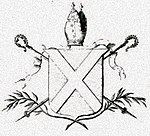Related Research Articles
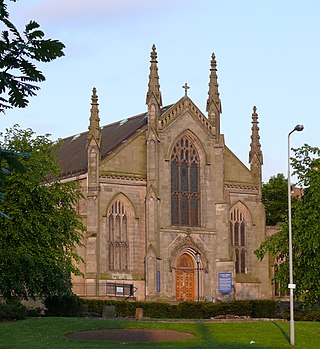
The Archdiocese of Saint Andrews & Edinburgh is an archdiocese of the Latin Church of the Catholic Church in Scotland. It is the metropolitan see of the province of Saint Andrews and Edinburgh, consisting of the additional suffragan sees of Aberdeen, Argyll and the Isles, Dunkeld, and Galloway. The archdiocese is led by Archbishop Leo Cushley, and its cathedral is St Mary's Cathedral, Edinburgh.

Andrew Forman was a Scottish diplomat and prelate who became Bishop of Moray in 1501, Archbishop of Bourges in France, in 1513, Archbishop of St Andrews in 1514 as well as being Commendator of several monasteries.
Donnchad, Earl of Fife (1113–1154), usually known in English as Duncan, was the first Gaelic magnate to have his territory regranted to him by feudal charter, by King David in 1136. Duncan, as head of the native Scottish nobility, had the job of introducing and conducting King Malcolm around the Kingdom upon his accession; however, Malcolm died not long after being crowned.
The Bishop of Edinburgh, or sometimes the Lord Bishop of Edinburgh, is the ordinary of the Scottish Episcopal Diocese of Edinburgh.
Guillaume or William de Malveisin was Chancellor of Scotland, Bishop of Glasgow (1199/1200–1202) and then Bishop of St. Andrews (1202–1238).
Roger de Beaumont was a 12th and 13th century Bishop of St Andrews.
Richard the Chaplain was the Chaplain of King Máel Coluim IV before becoming Bishop of Cell Rígmonaid, the highest ranking Scottish see of the period. He came from a well connected Anglo-Norman Lothian-based family, and was the nephew of Alwin, Abbot of Holyrood. Richard was elected to the see in 1163, soon after the death of his predecessor Ernald, and was consecrated on Palm Sunday 1165 by other Scottish bishops in the presence of the king. He died in 1178 in the infirmary of the canons of the church. He was succeeded by John, called "l'Escot".

David de Bernham was Chamberlain of King Alexander II of Scotland and subsequently, Bishop of St Andrews. He was elected to the see in June 1239, and finally consecrated, after some difficulties, in January 1240. He died at Nenthorn in 1253 and was buried at Kelso. One interesting feature of his life which has left a written record is the fact that as bishop of St Andrews he consecrated a long list of churches in his diocese. These churches are listed by name, together with the dates on which they were consecrated, in the 1240s, in a 13th-century Pontifical now in the Bibliothèque National, Paris.
William de Landallis was a 14th-century Bishop of St. Andrews.
Patrick Graham was a 15th-century Bishop of Brechin and Bishop of St. Andrews; he was also the first Archbishop of St. Andrews.
Robert Blackadder was a medieval Scottish prelate, diplomat and politician, who was Abbot of Melrose, Bishop-elect of Aberdeen and Bishop of Glasgow; when the latter was elevated to an archbishopric in 1492, he became the first ever Archbishop of Glasgow. Blackadder died while en route to Jerusalem on pilgrimage.
The Bishop of St Andrews, Dunkeld and Dunblane is the Ordinary of the Scottish Episcopal Diocese of St Andrews, Dunkeld and Dunblane. The see is located at St Ninian's Cathedral in Perth, Scotland.
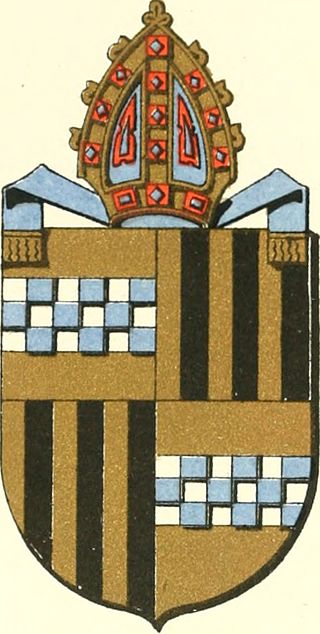
Andrew Stewart was a 16th-century Scottish noble and cleric. He was a legitimate son of John Stewart, 1st Earl of Atholl and Eleanor Sinclair, daughter of William Sinclair, Earl of Orkney. His paternal grandmother was Joan Beaufort, former queen-consort of Scotland. Andrew chose an ecclesiastical career, held a canonry in Dunkeld Cathedral and was rector of Blair parish church, a church under the control of the earls of Atholl.
John Guthrie was a Scottish prelate active in the first half of the 17th century who became Bishop of Moray.
William Hay was a Scottish clergyman and prelate who rose to be the final Church of Scotland Bishop of Moray.
Gregoir [Gregory, Gregorius] is the third known 12th century Bishop of Ross, an episcopal see then based at Rosemarkie.
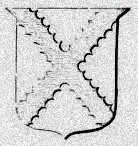
Nicholas de Balmyle, also called Nicholas of St Andrews, was a Scottish administrator and prelate in the late 13th century and early 14th century. A graduate of an unknown university, he served his earliest years as a clergyman at St Andrews, moving on to hold churches in Lothian as well as deputising to two archdeacons of Lothian.
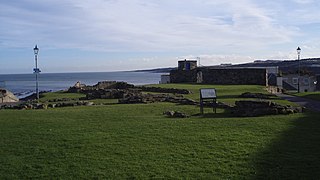
The Church of St Mary on the Rock or St Mary's Collegiate Church, was a secular college of priests based on the seaward side of St Andrews Cathedral, St Andrews, just beyond the precinct walls. It is known by a variety of other names, such as St Mary of the Culdees, Kirkheugh and Church of St Mary of Kilrymont.
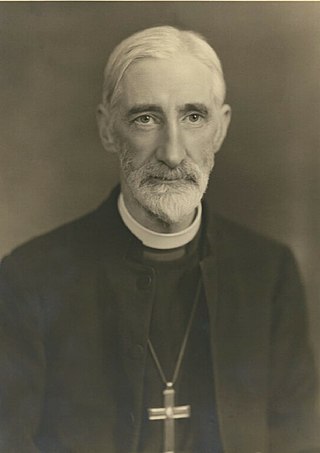
James Lumsden Barkway was a bishop in the 20th century.
Patrick Torry (1763–1852) was a Scottish Anglican bishop who served as a bishop in the Scottish Episcopal Church during the first half of the 19th century.
References
- Dowden, John, The Bishops of Scotland, ed. J. Maitland Thomson, (Glasgow, 1912), p. 7
